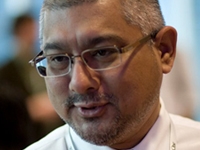
Ways to achieve incredible organizational success
By Prof Sattar Bawany The New Realities
An unprecedented number of workers from four generations – Traditionalist, Baby Boomers, Gen Xers and Gen Yers – are working alongside one another and bringing their own values, goals and communication approaches to the workplace. Such generational dynamics in the workplace affect morale, productivity, recruitment and retention. Organizations are facing immediate challenges when it comes to optimizing productivity, protecting profits and growing their businesses.
The Singapore’s Tripartite Alliance for Fair Employment Practices (TAFEP) released a report on “Harnessing the Potential of Singapore’s Multigenerational Workforce” in April 2010. Among other things, the report pointed to the different communication styles needed by a multi-generational workforce and how best to organize intergenerational teams to be more productive. A reassuring finding from the survey was the common belief held across all generations in the workforce that a diverse workforce, comprising different generations, has a positive effect on the overall performance of the organization.
In the same TAFEP Report, the survey found that together, Gen X and Gen Y make up 60% of the Singapore workforce. This also means that 40% of the Singapore workforce is over 45 years of age. Each and every generation has its own characteristics.
Role of Leader in Engaging the Multi-Generational Workforce
Each Generation bring different experiences, perspectives, expectations, work styles and strengths to the workplace. Despite the perceived "generation gap" from differing views and potential conflict, leaders in organizations have the opportunity to capitalize on the assets of each generation to achieve competitive advantage.
Leaders who harness this unprecedented opportunity for growth, development, and collaboration, and build bridges between generations, will thrive in particular in today’s turbulent economic landscape.
For Leaders who have four generations of employees sitting in a meeting or working on a project, it can seem like each generation has its own worldviews, priorities, career models, motives and values. The Leader need to enhance their understanding of generational characteristics and the impact of their own management practices on each of these groups. They need to leverage on the strengths of each generation. Taking full advantage of the multi-generational workforce will enable employers to effectively attract and retain employees, build teams, deal with change, and increase employee engagement.
Impact of Leadership Effectiveness on Employee Engagement and Organizational Success
Organizations need to deliver service value and build good customer relationships in order to generate sustainable results through their satisfied and loyal customers. Employees being at the fore-front of the service value chain hold the key to building the satisfied and loyal customer base (See Figure 1).
Employees who are engaged and motivated are instrumental in delivering the service experience. The level of employee engagement is dependent on the “Organizational Climate”; where “Organizational Climate” (sometimes known as Corporate Climate) here simply refers to “how employees feel about working in the organization/business unit/department/division.” Organizational climate is the process of quantifying the “culture” of an organization. It is a set of properties of the work environment, perceived directly or indirectly by the employees, that is assumed to be a major force in influencing employee behavior and engagement.
“Organizational Culture” refers to the shared values, beliefs, or perceptions held by employees of an organization. Having an “Organizational Culture” that enhances employee commitment and capability will lead to increase in customer loyalty. Achieving a “Conscious Culture” (Fred Kofman, Conscious Business, 2006) requires impeccable coordination amongst the team members, authentic communication with one another, and engaging in constructive negotiations in their dealings with one another and other stakeholders.
We know that leaders create, transform and manage organizational cultures. The leader’s values, beliefs and leadership styles will impact the organization’s climate. We need “Level 5 Leaders” (Jim Collins, Good to Great, 2001) who demonstrate ontological humility and possess emotional mastery. They also need to possess essential integrity in discharging their day to day role and responsibilities towards engaging the employees.
Figure 1
Conclusion
The multigenerational workforce offers both challenge and opportunity. In the current labor market, the Traditionalist is delaying retirement (or returning to work), Baby Boomers are beginning to retire, Generation Xers have realigned their work/family priorities and Generation Yers is entering the workforce with distinctly different demands of their employers than those of previous generations.
A multi-generational workforce can provide many benefits to companies that maximize the assets of each group. By capitalizing on the strengths and values of all generations, organizations can create a competitive advantage while employees can realize their full potential (TAFEP, 2010).
Because engaged employees are already performing well, some leaders think they should leave them alone. However, Great leaders do just the opposite…they spend most of their time with their most productive and talented employees because they have the most potential. A leader who coaxes an average performance from a below-average employee still has an average performer. But a leader who coaches a good employee to greatness gains a great performer. Engaged employees can inspire other employees, furthering positive change within the organization.
About the Author
Article by Prof Sattar Bawany, Honorary Academic Advisor of International Professional Managers Association (IPMA) and Adjunct Professor of Strategy of Paris Graduate School of Management (PGSM). He is also the Co-Chair of Human Capital Committee of American Chamber of Commerce (AmCham Singapore). He can be contacted at academic.advisor@gmail.com and Website: www.ipma.com.sg.
Prof Bawany presented a Paper on the same topic, ‘Leading and Engaging a Multi-Generational Workforce’ at the Contact Centre Association of Singapore (CCAS) Regional Symposium on 20 October 2011. For further details, please visit: https://ccas.org.sg/

























 Advertise
Advertise






